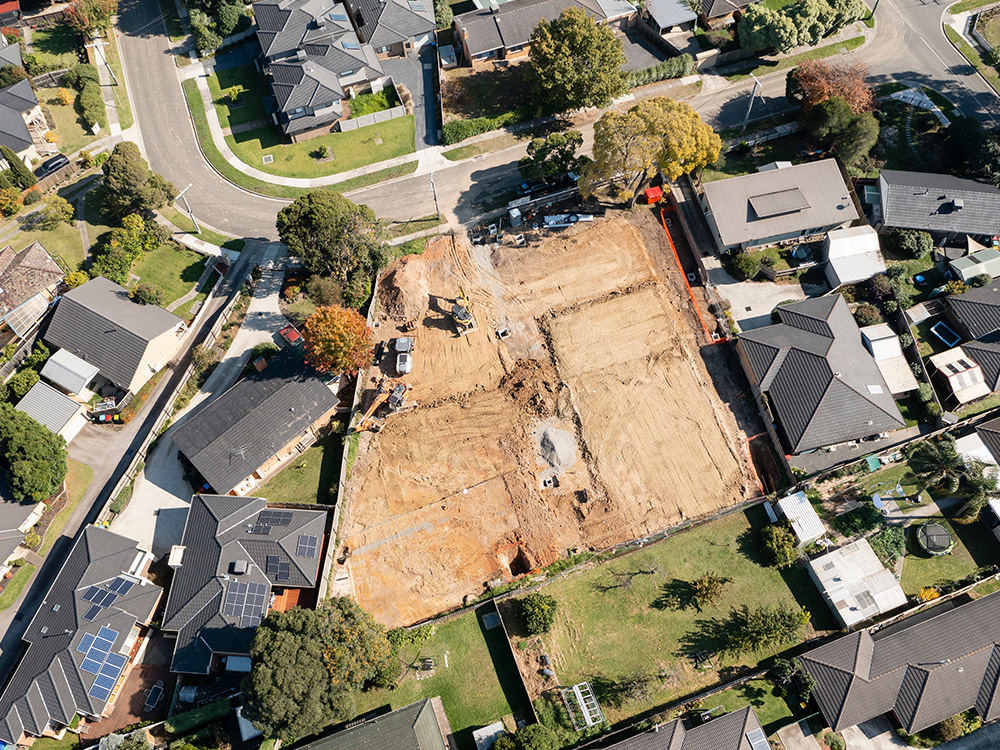Bridging finance for land
When you spot a land purchase opportunity you often need to move fast before someone else does. Cash is king but when you don't have access to funds to seal the deal, bridging finance is a great alternative finance option.

Key benefits of bridging finance for land
The key benefit of bridging finance for land is that is very quick to put in place so you're typically able to draw down funds, sometimes in as little as 3 - 5 business days.
Financing using a land bridging loan is ideal for transactions when you need to respond quickly to buy land that has come onto the market unexpectedly. Bridging loans can be used to purchase land for commercial or residential development, in addition to mixed-use land.
Over the previous 20 years, the cost of residential land has increased eightfold. Soaring costs are due to a scarcity of residential building land for sale, as well as strong demand for new homes. It's not just prime location land that's rising in price either. With the new UK Government drive towards sustainability, the Environment Act 2021 which was passed in November 2021, land that's classified as brownfield and typically not suited for development has now become more desirable because it's being used to offset this legislation's planning conditions.
How much can you borrow for a land bridge Loan?
Broadly speaking, when it comes to bridging finance for land, there are a few limitations to how much you can borrow. Whilst the average UK land purchase price in 2021 was £379,000 (ONS), the highest was some £932,540,400 and there were a further 870 deals that exceeded eight figures, so ambitious projects are more common than you might think. In today's market, lenders are often willing to offer large bridging loans when you have the appropriate security and the right project.
It gets a little more complicated when it comes to the specifics of how much you can borrow. What you can borrow is determined by the following factors:
- The lender's assessment of your project's risk
- If you've previously purchased land and successfully developed property on it
- If you're looking to buy land for a commercial or residential development
- The value the project will benefit from with development
- Whether or not you have planning consent, and what type
- How valuable the land be once it is developed
- How you intend to repay the loan
Obtaining land bridging finance from lenders
If you've not used bridging finance before, deciding which lenders to approach can be difficult, especially if you need to borrow a large sum of money. Land loan lenders have preferences for particular types of projects or developments, including whether or not you're an experienced developer, but these aren't usually obvious until you've spent a lot of time detailing what you want to acquire and how you want to use it. As a result, it's easy to waste time approaching various lenders just to discover they're not interested in your project or won't consider the type of land you want to acquire.
Acting fast is crucial, especially if you want to buy desirable land. The time it takes to get bridging finance for land can mean the difference between a successful transaction and one that falls at the last hurdle. Working with a bridging finance broker like Finbri, who has the connections to finance even high-value land purchases, could be critical to your success.
Your aims and objectives will determine who we seek to place your land bridging finance requirements with. Purchasing rural land for the purpose of constructing a high-value primary dwelling differs significantly from purchasing city-centre land for the purpose of constructing a commercial business. Different lenders are better suited to different scenarios, and your bridging loan broker will know where to look, who to contact, and how to present your case to potential lenders.
Purchasing land without planning consent
If you want to build on land but don't have planning permission, getting a loan will be difficult if you're doing it on your own. Because there are so many unknowns and changing parts to these deals, most lenders are hesitant about financing against this type of land. You might have trouble getting planning; there may be delays, or the authorities may not like your plans, in which case you'll have to start over.

When it comes to land bridging loans, lenders are always worried about how you'll exit and repay the loan. They want to know that you have a viable plan in place and that you will be able to repay the loan on time. Most lenders consider land purchases made without planning permission to be high-risk transactions, and conventional lenders may refuse to lend to you. Expect less flexibility in terms of how much you can borrow, typically in cases like these it's no more than 50% loan-to-value and you may need to submit additional security to complete the transaction.
Bridging finance solutions on land without planning approval are uncommon among mainstream lenders, so you'll have to hunt for specialist alternative lenders. Because of the complexities of these arrangements, lenders have complete discretion over who they lend to. Your profile, net worth, track record, and future ambitions will influence their decision. To secure a land loan, you'll need to describe your circumstances in a way that gives your lender confidence in the viability of your projects and your capacity to obtain planning clearance. Brokers are adept at positioning your case in the best possible light which helps generate more interest from multiple land lenders. This in turn creates a competitive dynamic which drives rates down for the borrower.
We have direct access to lenders who will consider loans for land purchases even where there is no planning permission because they have contacts in every sector of the market, be it hospitality, agriculture, commercial or residential. We're able to go right to the sources of the best finance rather than wasting time looking for lenders who will examine your condition before engaging in discussions. You'll get offers fast - often within 24 hours – so you can feel confident about moving forward with your transaction.

What are the costs of land bridge financing?
Most lenders are willing to lend to you if you have never purchased land before, yet the more experience you have, the more possibilities you will have.
Most lenders will consider letting you borrow if you have little experience with this type of business. However, you are unlikely to acquire a loan-to-value ratio as high as someone who has successfully bought and sold land and related projects in the past.
Land bridging finance is always discussed on an individual basis, with lenders scrutinising the bigger picture. Land is rarely purchased 'simply to acquire land,' as it is usually always part of a larger development or commercial endeavour. Your initiatives, their complexity, the risk involved with them, and the future value of the property or land will all factor into how competitive your financing is.
You may be able to borrow up to 70% of the cost of the land if you have a strong financial position and a proven track record of buying and developing land, as well as the requisite planning permissions or licences. You may not be able to borrow as much if the transaction is more complicated or your lenders consider it is risky or aggressive. Interest rates will fluctuate as a result.
You can also borrow more than 70% where you have, and are willing to, put up additional property as security. This is how many land bridging loan lenders achieve 100% finance.
Exit strategies
No ifs no buts, you have to have an exit strategy. How you expect to repay your land bridge loan will often be as important to a lender's decision to accept or deny your application as your plans for the land you're buying.
In most cases, there are two main exit options:
- To repay the loan, via the sale of the land and related structures on it
- Refinancing the loan (although there are various options here, depending on your development)
If you have a major liquidity event, you may be able to pay off the land loan in another way (selling assets, selling a business, etc.) Given that borrowers typically take out land loans to develop it, the most common options are to sell the developed land or refinance it.
Short-term financing is always an option with bridging finance. You can take out a loan for a few months to two years. When it comes to obtaining a bridging loan to purchase land, having a sound exit plan that lenders can support will be critical.
Land Bridging Loan
A Land Bridging Loan is a fast financing solution for purchasing land, with or without planning. It enables investors, developers and speculators seize time-critical land opportunities, such as: purchasing Residential land, Commercial land, Agricultural land (pasture and arable) and Development land (including Greenfield and Brownfield sites, garden plots, ransom strips, woodland and carparks).
Discover More





